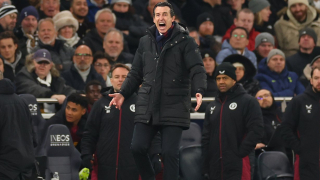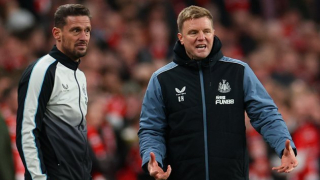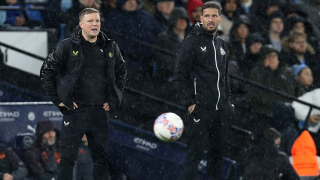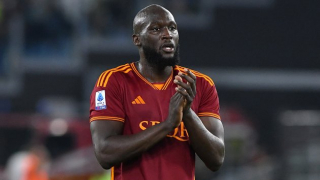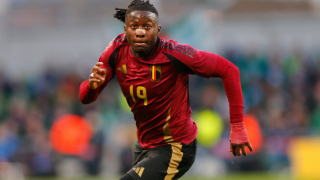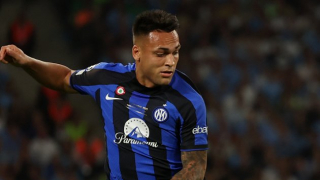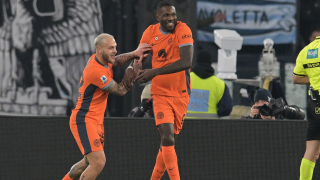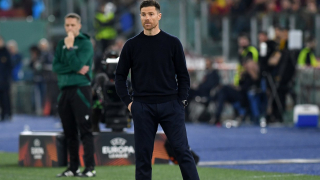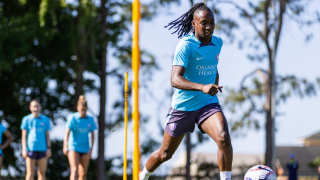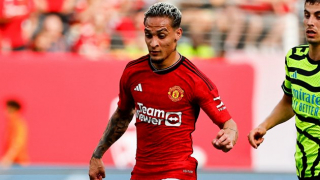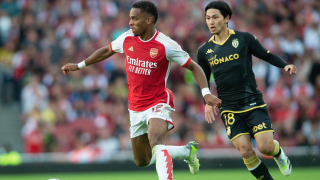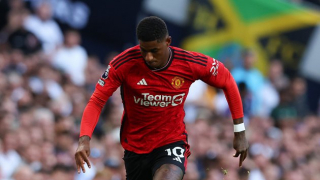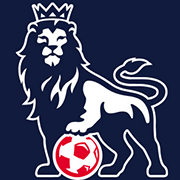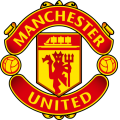Sir Alex Ferguson's 27 years in charge of Manchester United brought unprecedented success, lifting the club from two decades of disappointment to become the global powerhouse of the sport. He won 13 Premier League titles, five FA Cups, and two European Cups, changing the course of English football forever.
His years of success can be broken down into three periods, each defined by distinct tactical shifts that ended a dry spell. The years 1992-1994, 1996-1999, and 2006-2009 are generally considered the three most important eras under Ferguson. Here we compare the three, retelling the stories of each and deciding which should be considered United's greatest ever Ferguson team.
1992-1994: CANTONA'S ARRIVAL HELPS 26-YEAR WAIT
Narrowly missing out on the 1992 league title to Leeds United, Man Utd began the new season having reached the unwanted milestone of 25 years without the crown. The way the 1992/93 campaign started, collecting 21 points from 15 games, it looked like their wait would go on a little longer.
But Eric Cantona arrived and everything changed, immediately lifting the club to new heights as they rapidly climbed the table. United would go on to lift the Premier League trophy in 1993 and retain it in 1994, winning the FA Cup that year to complete the first double in the club's history.
How they played
The main reason for United's success was Cantona's creativity, as Ferguson switched from 4-4-2 to 4-4-1-1 to accommodate the Frenchman's genius as a number ten. In these tactically primitive times, that was a bold and unique approach in England.
Ferguson focused on rapid counter-attacks down the flanks, launched by Peter Schmeichel's quick distribution over the top of the opposition defence to pick out Andrei Kanchelskis on one wing and Lee Sharpe or Ryan Giggs on the other. With Mark Hughes bringing the ball down for Cantona, United repeatedly attempted to beat the offside trap with three or four runners in behind.
Cantona's selfless creator role was the biggest reason United could break so brilliantly, but the other factor in their success was a ruthlessly powerful central midfield. Roy Keane's strong tackling ensured United could outmuscle opponents on bog-like pitches across a gruelling 42-game season.
On the whole, the tactics were minimal. United looked to get the ball out wide and cross into the box at every opportunity, with training drills rarely venturing beyond this basic method of attack.
Key Matches
Norwich 1-3 Man Utd, '93: In April, title-favourites Norwich took on a Man Utd side winless in four and slipping up badly. Ferguson reacted bravely, playing Brian McClair in midfield and deploying three wingers with Giggs up-front alongside Cantona, and the visitors promptly scored three goals in the first 21 minutes. All three were extremely direct and on the counter – the defining feature of the club in this era. United won all their remaining games to seal the title.
Man Utd 4-0 Chelsea, FA Cup final '94: Chelsea, rejuvenated by the appointment of Glenn Hoddle, had beaten United twice in the league already that season. But Ferguson's side thrashed the Blues in the final thanks to two penalties from Eric Cantona and goals from McClair and Hughes. It was a performance that confirmed they were emphatically the best team in the country.
1995-1999: CLASS OF '92 BECOME TREBLE WINNERS
Following the disappointment of losing the 1995 league title to Blackburn Rovers, Ferguson made the brave decision to get rid of experienced players Kanchelskis, Hughes, and Paul Ince, and rebuild with what is now known as the class of '92: Gary Neville, Phil Neville, David Beckham, Nicky Butt, and Paul Scholes.
Alan Hansen said they couldn't win anything with kids, but they did, lifting the league title three years in a row, culminating in the treble in 1999.
How they played
As Michael Cox writes in his tactical history of the Premier League, The Mixer, Man Utd gradually became more cultured in this era, the direct consequence of Ferguson's experience managing in European competition during the late 1990s. This gave him access to the continent's more complex tactics while the rest of England remained insular.
The team became more patient in possession, as the manager looked to swap out centre-mid destroyers – midfield was still a war zone in England – for elegant players able to pass in triangles, gaining control of matches. The 4-4-2 returned, but now it was more of a diamond shape with Keane at the base and Scholes linking things together in front of him.
What most defined this period was United's variation on the flanks, with Giggs a traditional winger and Beckham tucking in more to cross. This was unique at the time, as was Ferguson's commitment to squad rotation. He managed to keep four lethal strikers happy at the same time: Dwight Yorke, Andy Cole, Ole Gunnar Solskjaer, and Teddy Sheringham all played key roles.
A combination of squad depth, brilliant partnerships in attack, and Ferguson's unrivalled access to picking up tactical trends from Europe put Man Utd streets ahead of the competition domestically.
Key Matches
Man Utd 3-2 Juventus, '97: Having modelled their style on Juve's efficiency and functionality, this performance in a Champions League group game showed United's maturity – and devastating attack. Their control of the contest provided the foundation for their eventual success in 1999, a template performance that showed United had grown since losing twice to Juve the year before.
Man Utd 2-1 Arsenal, '99: Ryan Giggs's extra-time wonder goal at Villa Park is one of the most iconic moments in English football. Arsene Wenger's side were finally beaten in a superb FA Cup semi-final, with the winning strike ultimately showing Ferguson's team had the flair, as well as the organisation, to win everything.
2006-2009: ROONEY, TEVEZ & RONALDO LEAD RESURGENCE
After four years without a league title it looked as though Ferguson's time at the club was drawing to a close. But hiring tactician Carlos Quieroz proved a master-stroke, and together these two built a magnificent side - and perhaps the best of the Premier League era.
United won three league titles in a row and reached two Champions League finals, beating Chelsea on penalties in 2008 before losing to a Lionel Messi-inspired Barcelona 12 months later.
How they played
Built on the foundation of an extraordinary defence of Patrice Evra, Nemanja Vidic, Rio Ferdinand, and Gary Neville, this period saw Ferguson reinstate the sharp counter-attacking football of the early 1990s. However, things were considerably more tactically complex by 2006. For starters, Michael Carrick, Owen Hargreaves, and Scholes (in a new deeper role) made United into a more elegant side on the ball.
But more pertinently, Ferguson and Quieroz devised a free-form, striker-less formation that could be labelled either 4-3-3, 4-4-2, or even 4-6-0. Having first seen a striker-less system in a 2-1 defeat at Roma in 2007, Ferguson very much made it his own, aided in this period by brilliant in-depth coaching from Quieroz and Rene Meulensteen.
Wayne Rooney, Cristiano Ronaldo, and Carlos Tevez formed a magnificent partnership and, supported by tireless and intelligent work from Park Ji-Sung, they would dovetail with total creative freedom. Ronaldo in particular popped up in any area of the pitch he wanted, with the others simply slotting wherever needed around him to create ultra-fluidity on the counter.
Key Matches
Man Utd 1-0 Barcelona, '08: We all remember the front three, but United's organisation without the ball was equally important. A Scholes long-ranger sealed their place in the 2008 Champions League final after a clever, resilient display against Barca. Ferguson's 4-5-1, with Tevez up front and Rooney on the wing, was testament to the expert tactical tweaking that took place at the time.
Man Utd 3-2 Aston Villa, '09: Although generally dominant in the Premier League, United perhaps would not have won the title in 2009 without Federico Macheda's injury-time winner against Villa in April. Following consecutive league defeats, United were desperate when, at 2-1 down, the 17-year-old was brought on for his debut. His 93rd minute winner restored Ferguson's men to the top of the table.
CONCLUSION
All three eras are equally important in defining Sir Alex Ferguson's legacy. The first laid the groundwork for what was to come, the second represented the movement towards the integration of European methods, and the third was quite possibly the most complete team in the club's history.
For that reason, the 2006-2009 era - with Rooney, Ronaldo, and Tevez; with Vidic and Ferdinand – is Sir Alex Ferguson's greatest ever Manchester United side.

